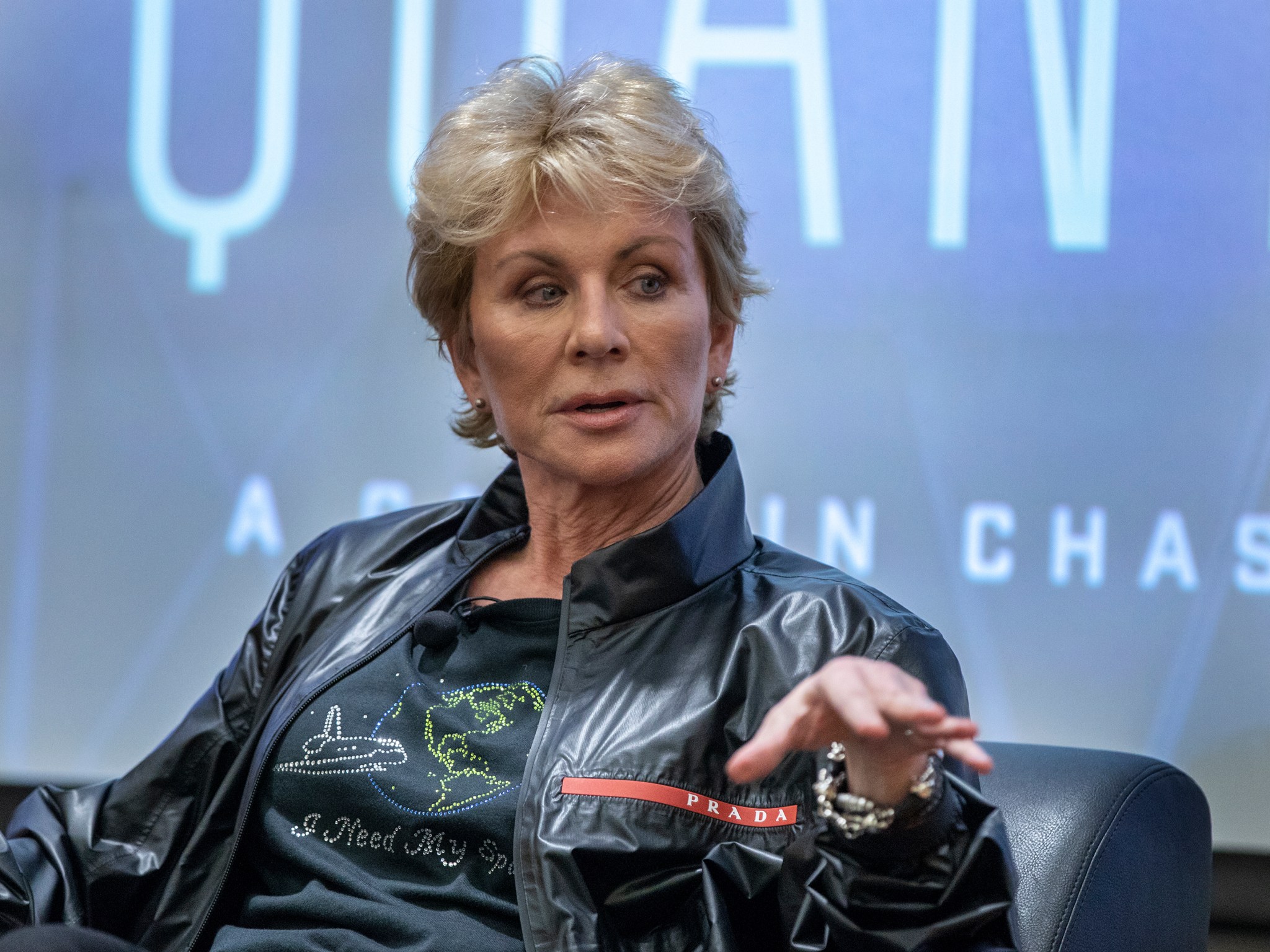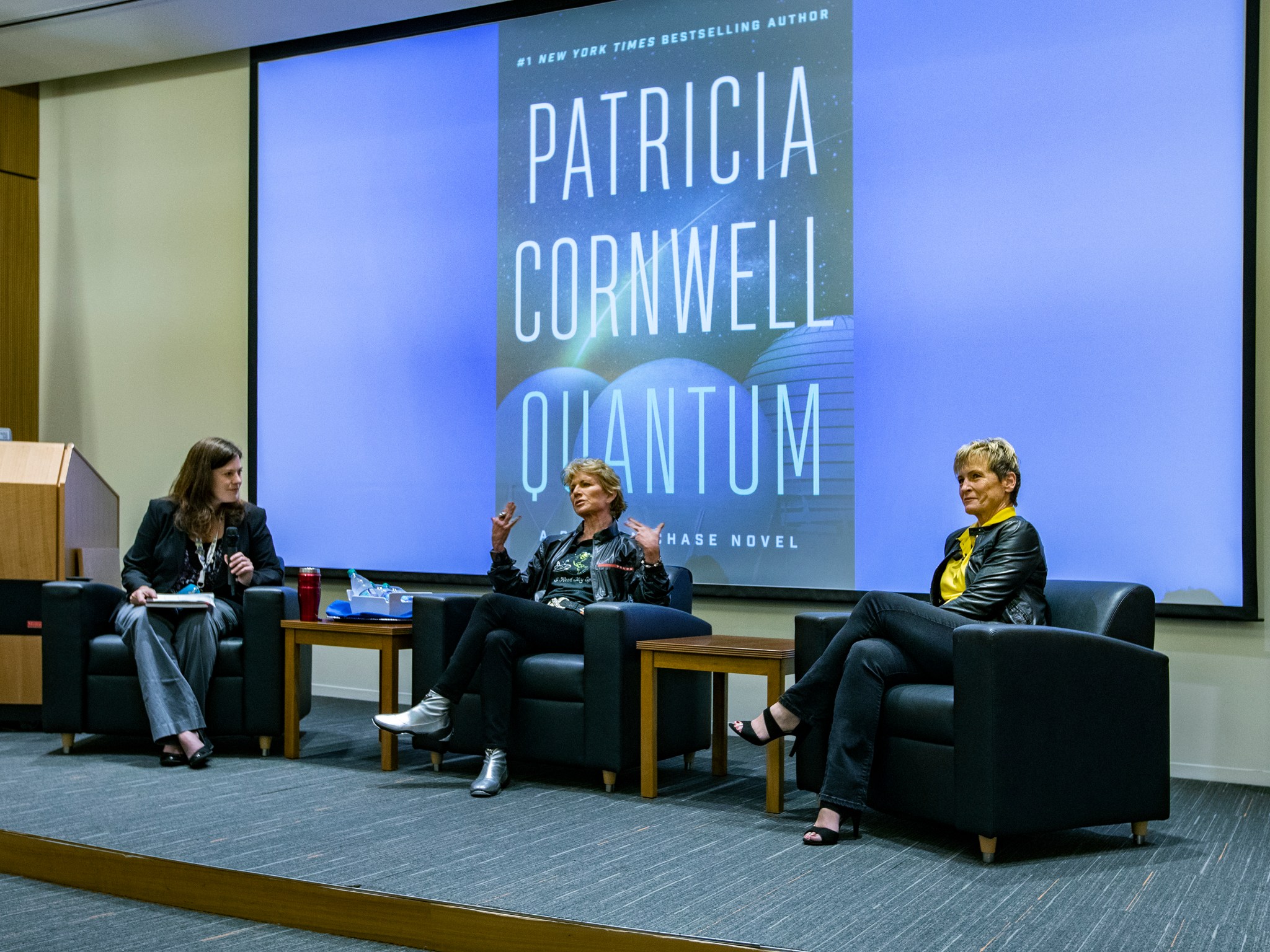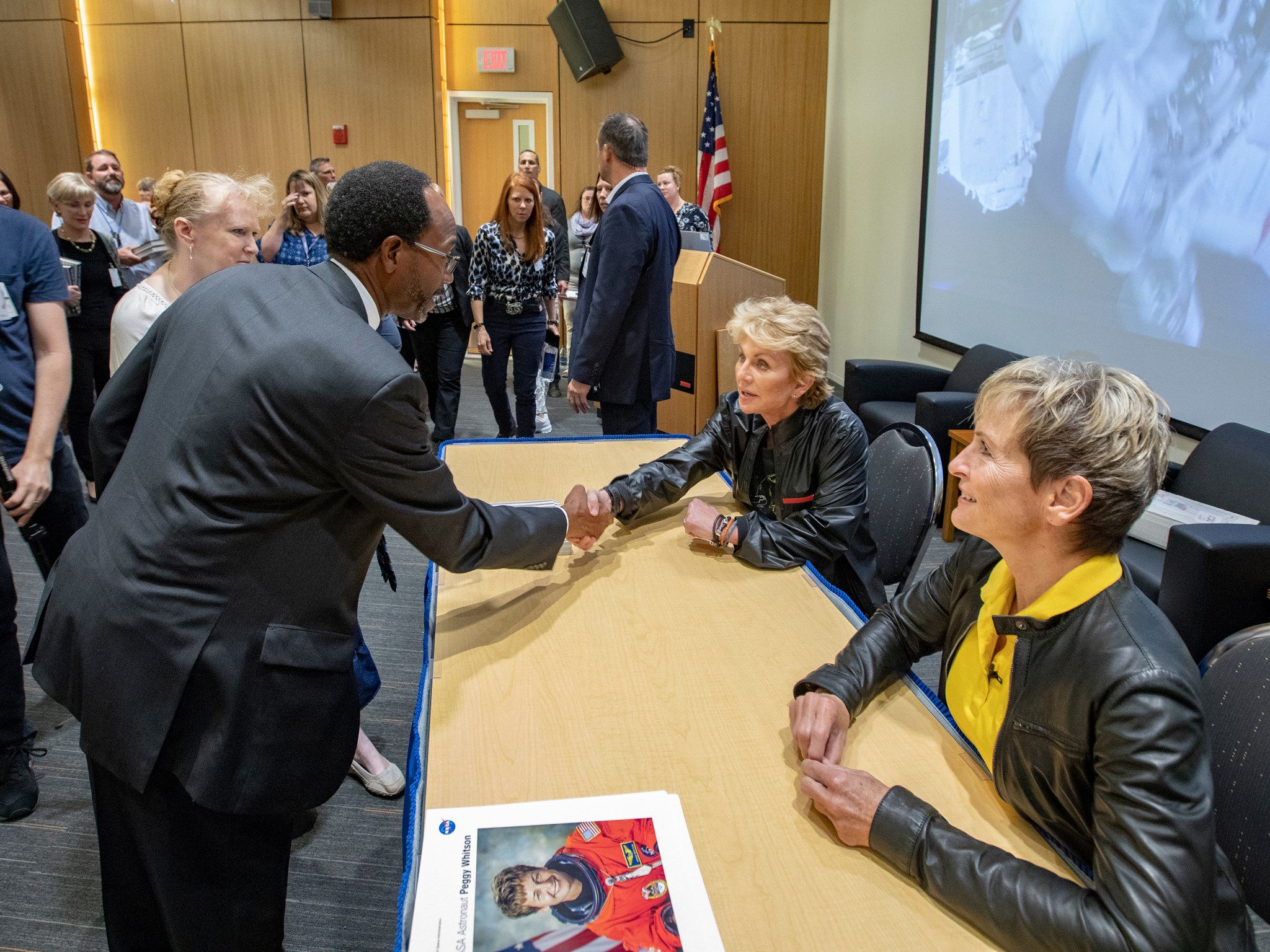It was a book 17 years in the making, but it was worth the wait for New York Times bestselling author Patricia Cornwell.
In October 2002, Cornwell toured NASA’s Langley Research Center in Hampton, Virginia, and helped plant the seed for her latest novel, “Quantum,” which is primarily set at Langley.
“This is where it all started. NASA Langley was the best place to do this. This is where you build things from the ground up,” she said. “Who wouldn’t fall in love with NASA Langley? Langley does a little bit of everything.”
Cornwell, who has written dozens of books from novels to biographies to cookbooks, fell in love with how Langley was the agency’s first field center, the history of the facility and how Langley touches many of the efforts NASA undertakes.
Cornwell still had the contact information from the people who set up her first tour of Langley, and the research into “Quantum” began in full swing about two years ago. The main character in “Quantum,” Captain Calli Chase, is a mix of what she saw at Langley and other NASA centers during her research – scientist, astronaut and cybersecurity officer – into a female James Bond-type of protagonist.
“Where would this person come from? How about NASA?” she said. “Because where do you go for the smartest, the coolest bad asses? You go to NASA.”
Cornwell spoke shortly after the release of “Quantum,” when she paid another visit to Langley to speak to the center’s workforce about the novel and how it took shape from research to publication.
Cornwell brought along one of the characters in the book, as she was joined by record-breaking retired astronaut Peggy Whitson. Whitson consulted and trained Cornwell at NASA’s Johnson Space Center in Houston on what it takes to go into space. She also appears in the novel.
“I think we really do have the coolest jobs in the world,” Whitson said. “I was excited to share NASA in a different way.”
She also appreciated the way Cornwell is able to translate highly technical information into a fictional format that brings in new audiences and fans.
“As an artist, Patricia has a creative mind for engineering details,” Whitson continued. “She’ll take things that people have said and she’ll put the pieces together in a new and creative way.”
Cornwell said she loved the challenge of talking to the NASA workforce to learn more about the agency’s missions and translate them into a crime and exploration novel for the general audience. The process of gathering data is essential to Cornwell, as it’s her most time-consuming part of writing a book.
“The research never stops,” she said. “There’s so much to learn.”
Cornwell also said she is excited to spread the word about Langley and NASA through her new series of novels.
Cornwell made the visit to show her appreciation for the people, capabilities and facilities that served as the setting for “Quantum.”
“She’s an advocate for NASA and our mission to get to the Moon by 2024,” said Langley Center Director Clayton Turner.
Cornwell toured many facilities at Langley, but her favorite was the Landing and Impact Research Facility (LandIR), better known as the gantry. It was previously known as the Lunar Landing Research Facility where astronauts such as Neil Armstrong trained for the Apollo missions to simulate landing on the Moon.
“The gantry’s pretty dramatic,” she said. “It’s a giant three-dimensional math problem. That to me is amazing to watch.”
Cornwell said she wants to bring the STEAM (Science, Technology, Engineering, Arts, and Math) conversation forward for everybody – including adults – to stress that science is cool and arts and science go together for people no matter their gender.
“I love the push that NASA is making in that direction,” she said.
Whitson, who holds the U.S. record for most cumulative time in space at 665 days, said she had fun sharing NASA with Cornwell, especially when she was giving her a taste of the physical demands of being an astronaut. Still, the heart of the research was technical.
“For the most part, we’re a bunch of nerds,” she said. “She’s trying to make nerds cool.”
When asked about finding a passion, Cornwell urged that whatever you do, do it for the right reasons – not for fame or fortune, but for the love of the game.
“I want what I do to matter,” she said. She also stressed that the Langley workforce and all of NASA matters to the world.
“I think all of you are unsung heroes,” she said. “Consider me your reporter and I’m here to serve.”
- To view a photo gallery of their visit, click here.
Eric Gillard
NASA Langley Research Center






























